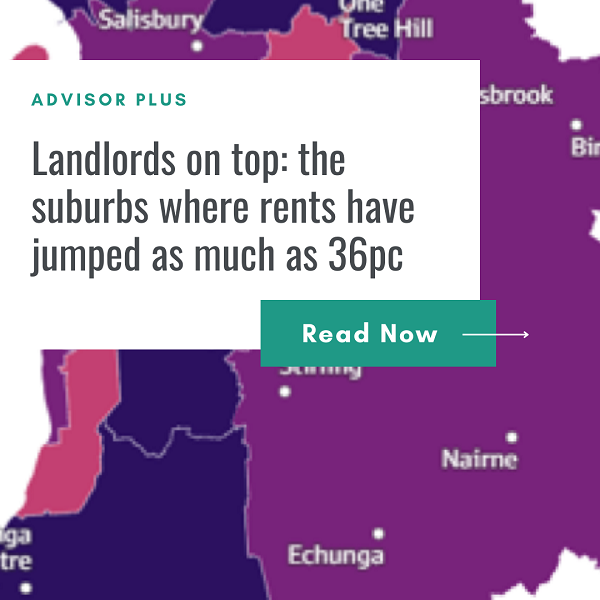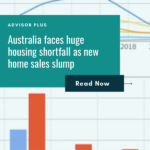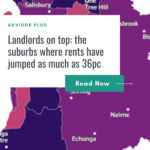An acute shortage of properties is driving rents sharply higher across Australia, prompting intense competition among tenants, as experts warn the crisis will not be solved without a concerted effort to build more homes.
People living in inner-Melbourne, Ku-ring-gai on Sydney’s leafy upper north shore, and Caboolture, north of Brisbane, are experiencing some of the largest price rises nationally, with rents increasing as fast as 36 per cent in some areas, according to online real estate listing data compiled by PropTrack for AFR Weekend.
With the share of homes that are vacant sitting at just 1.5 per cent, advertised rents are increasing at 8.7 per cent and tenant advocates say prospective renters are increasingly resorting to last-ditch tactics like rental bidding and hiring agents to secure a place to live

Ku-ring-gai recorded Sydney’s fastest rate of rent growth in the year to February, with the asking price of a new lease jumping by 18 per cent over the past 12 months.
It was followed by Botany, in Sydney’s south, which has recorded rental growth of 17 per cent, and Chatswood on the north shore, where leasing a home is 16 per cent more expensive than last year.
The data include houses and apartments.
The problem extends across the city, with rents growing by more than 10 per cent in 21 of the 46 regions of Sydney, according to PropTrack, while the citywide vacancy rate has fallen to just 1.7 per cent.
PropTrack economist Angus Moore said the reason rents were growing so quickly was because there were so few vacant properties, tipping the supply-demand balance in favour of landlords.
“That means it’s very hard for tenants to find a rental, and competition is fierce when they are available. We’re seeing rents grow very quickly as a result,” he said.
Increases of 30 per cent in Melbourne
Renters in Melbourne’s inner-city are being asked to pay 30 per cent more than last year, with the return of international students putting extreme pressure on a market that experienced a huge tenant outflow during the first couple of years of the pandemic.
Rents in the neighbouring community of Port Phillip are up by 12 per cent over the past 12 months, while homes in Yarra and Boroondara in the city’s inner-east are leasing for 10 per cent more than last year.
Across Melbourne, the vacancy rate is 1.4 per cent, according to PropTrack.

Mr Moore said the reasons why vacancy rates were so low were complex.
“A big part of the story is we saw many share houses break apart during the pandemic and shift into smaller households. That means we just need more rental properties to house the same number of renters,” he said.
“More recently, with borders reopened, we’ve seen strong net overseas migration and that’s contributing to rental demand, too, particularly in inner-city areas. But that’s a more recent shift, and rental markets were already tight – particularly in regional areas and the smaller capitals – well before borders reopened.”
Rental markets in smaller capital cities like Adelaide and Perth are extremely tight, with vacancy rates of 0.9 per cent.
Fourteen of the 15 capital city areas with the lowest vacancy rates are found in these two capital cities, with fewer than 0.7 per cent of all rental properties available for lease in February.
Rents in Caboolture Hinterland, north of Brisbane, have increased by 36 per cent over the past year.

Tenants’ Union of NSW chief executive Leo Patterson Ross said there has been an inbuilt under-availability of homes for a very long time.
“We’ve see a lot more pressure on people to bid over the advertised price, which has gotten a lot of attention. But that’s one of a range of behaviours that people try when they’re feeling very desperate,” he told AFR Weekend.
Mr Patterson Ross said the pressures facing tenants had also led to the re-emergence of paid tenant agents, which are hired by prospective renters to try to secure a property, as well as applicants offering six months rent in advance.
“We’ve also seen a rise in the number of people who are being pressured to pay for things like database checks on themselves,” he said.

Mr Moore said there was no relief in sight for renters.
“Vacancy rates remain extremely low and migration has returned and is contributing to demand in inner-city areas,” he said.
”And while we are seeing more investors entering the market, which will help start to bring more supply to market, it will be a slow process – the number of new investors and new rental properties relative to the size of the overall rental market is small.”
Migration a factor
Jarden chief economist Carlos Cacho said the crisis is likely to get worse if migration continues at current rates.
”Dwelling supply should increase modestly in the near-term as work under construction completes, but the outlook for supply is dire in 2024, given a lack of new projects today,” Mr Cacho told AFR Weekend.
“One release valve may be household sizes once again increasing. This could take the form of couples living in two-bedroom units adding a house mate, or single people moving back into share houses or with family.”

PropTrack’s Mr Moore said the only sustainable long-term solution to the current crisis was to build more homes.
“In the near-term, raising Commonwealth Rent Assistance would help ease the strains of higher rents on low-income renters. It’s well targeted to the households that are most vulnerable to rental stress, and there’s little evidence that it has negative spillovers or leads to materially higher rents overall,” he said.
Mr Cacho said the short-term policy options were limited, including increasing rent assistance.
“In the medium to longer term increased supply is needed, likely from a combination of public or social housing and private housing,” he said.
“From a policy perspective, increased public housing construction and easing of zoning and development restrictions could help, but are unlikely to make a material difference in the next one to three years.“






